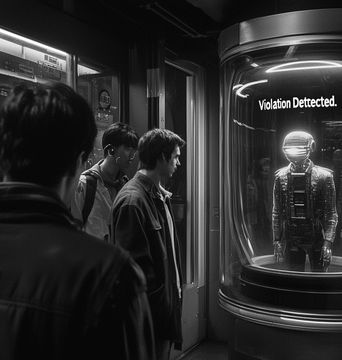OPENAI'S BAN HAMMER: USERS GET AXED FOR PROBING AI'S 'REASONING'!

In an unfolding scenario that challenges the intersection of AI transparency, user freedom, and organizational control, OpenAI, a world-renowned artificial intelligence research organization, appears to be battening down the hatches on the inquisitive tendencies of users attempting to probe its latest AI model, a mysterious entity codenamed "Strawberry."
Strawberry's tight-lipped demeanor is causing some discontent in the AI community where users have reported receiving emails from OpenAI, flagging them for "attempting to circumvent safeguards." The precise terms triggering these violations are enigmatic, with some users suggesting any references to the model's "reasoning" could be enough to elicit violation flags. This clampdown is veiled in irony considering the excitement and buzz created largely around Strawberry's ability for "chain-of-thought" reasoning.
OpenAI defends its stance with reasoning that these measures are necessary to prevent non-compliant material from inadvertently surfacing in the AI's thought process. Beyond that, they also aim to retain a competitive advantage in the intense arena of AI development.
However, this defense is not without its critics. The model's opacity has sparked widespread concerns about democratizing AI technology, an increasingly prevalent conversation in the global tech community. The inability to dissect the model's thought process or reasoning not only hinders programmers who are striving to hack AI models for safety and regulatory compliance but also inhibits broader understanding and trust-building in AI systems.
As we stand on the precipice of a rapidly unfolding AI-driven future, the question of transparency is highly consequential. While it's understandable that organizations like OpenAI would want to protect proprietary technology, the fine line between safeguarding and secrecy becomes blurred when it impedes open scientific discourse and development.
The real concern here skates beyond just the programmers' plight, extending towards the broader public. Without transparency, there is a looming risk of creating a tech world that’s impenetrable to the general public, potentially giving rise to a sense of distrust towards AI, which could hinder societal acceptance and integration of such technologies.
The increasingly opaque and secretive approach by OpenAI sends waves of concern across a populace eager to follow along as AI technology evolves and inevitably shapes our future. Hence, what unfolds in this context could prove instrumental in establishing norms for AI transparency and democratization, setting a precedent echoed across the AI development landscape.
As we lean into this discourse, we need to ask: how much opacity is too much? Where is the golden equilibrium of maintaining proprietary protection and cultivating public trust? Today we grapple with Strawberry's enigma, but the implications extend beyond a single AI model, into the future of how we develop, understand, and embrace artificial intelligence as a society.